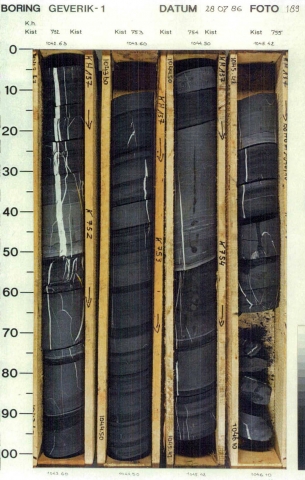Code
CLZLG
Status
Formal (Van Adrichem Boogaert & Kouwe 1994).
Lithological description
Sequence of grey to dark-grey and black limestones, thin- to thick-bedded and often partly silicified. Limestone beds often grade into calcareous and/or silicified black shales or black cherts toward the top. Very thin beds of tuffaceous rock occur, predominantly in the upper part of the member.
Depositional setting
Not yet determined.
Definition of lower boundary
Not yet determined.
Definition of upper boundary
Not yet determined.
Thickness indication
Up to 500 m (GVK-01).
Geographical distribution
Regional correlation
UK: Zeeland Formation; GER: Kohlenkalk Group; BEL: Goeree Formation & Loenhout Formation.
Age
late Visean.
Holostratotype
Well:
Depth (thickness) AH:
1883 - 2123 m (240 m)
Parastratotype
Well:
Depth (thickness) AH:
992 - 1492 m (500 m)
Origin of name
Named after the western part of the island of Goeree-Overflakkee in the province of Zuid-Holland.
Previous name(s)
None.
Reviewed by (date)
Tom van Hoof (2017).
References
Van Adrichem Boogaert, H.A. & Kouwe, W.F.P. 1994. Stratigraphic nomenclature of The Netherlands; revision and update by RGD and NOGEPA, Section B, Devonian and Dinantian. Mededelingen Rijks Geologische Dienst, 50, 1-20.
Cite as
TNO-GDN ([YEAR]). Goeree Member. In: Stratigraphic Nomenclature of the Netherlands, TNO – Geological Survey of the Netherlands. Accessed on [DATE] from https://www.dinoloket.nl/en/stratigraphic-nomenclature/goeree-member.
